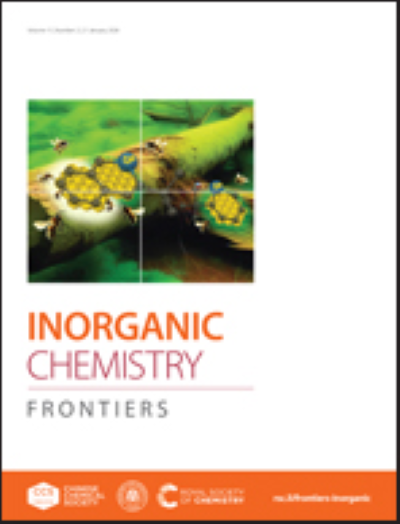Metal Selection Tactic in Nitronyl Nitroxide Biradical-3d-4f Macrocycle for Boosting Photothermal Conversion and Application of Solar-Driven Water Evaporation
IF 6.1
1区 化学
Q1 CHEMISTRY, INORGANIC & NUCLEAR
引用次数: 0
Abstract
Metal-organic photothermal conversion materials is vital for efficient utilization of renewable energy to relieve freshwater shortage. Driven by the aspiration to pursue performant photothermal conversion materials, extensive efforts are committed to regulating the photothermal effect. Decoration of the molecular skeleton represents the traditional design idea for adjusting the photophysical features. Distinctively, here, we introduce a more easy-to-operate heterometallic selection tactic that allows for fine adjustment of photothermal conversion ability as exemplified by a series of nitronyl nitroxide biradical-based 3d-4f macrocycles, namely DyCo-1, YbCo-2, DyZn-3 and GdCo-4. The comparative investigation of DyCo-1/YbCo-2 and DyCo-1/DyZn-3 reveals that photothermal conversion efficiency follows the trend of DyCo-1 (75.5 %) > YbCo-2 (71.9 %) > DyZn-3 (57.3 %) on account of 3d/4f metal modulation, suggesting Dy-Co combination achieves the optimization of photothermal performance. Furthermore, DyCo-1 is successfully applied to solar-driven water evaporation with efficiency of 53.1 %. To the best of our knowledge, macrocyclic compounds 1-3 represent the first example of nitronyl nitroxide-3d-4f photothermal materials. The work not only offers a feasible heterometallic modulation strategy to elaborately design molecular photothermal agents, but also a new material selection for solar-driven water evaporation and freshwater production with the intention of alleviating water scarcity.硝基氮氧化物双自由基-3d-4f大循环中金属选择策略促进光热转化及太阳能驱动水蒸发的应用
金属-有机光热转换材料是有效利用可再生能源缓解淡水短缺的重要手段。在追求高性能光热转换材料的愿望的驱动下,人们致力于光热效应的调节。分子骨架的修饰体现了传统的光物理特性调整的设计思想。特别的是,在这里,我们介绍了一种更易于操作的异质金属选择策略,可以精细调节光热转换能力,例如一系列基于硝基氮氧化物双基的3d-4f大环,即DyCo-1, YbCo-2, DyZn-3和GdCo-4。DyCo-1/YbCo-2和DyCo-1/DyZn-3的对比研究表明,光热转换效率遵循DyCo-1(75.5%)的趋势;YbCo-2 (71.9%) >;DyZn-3(57.3%)由于3d/4f金属调制,表明Dy-Co组合实现了光热性能的优化。此外,DyCo-1成功应用于太阳能驱动的水蒸发,效率达到53.1%。据我们所知,大环化合物1-3是硝基氮氧化物-3d-4f光热材料的第一个例子。这项工作不仅为精心设计分子光热剂提供了一种可行的异质金属调制策略,而且为太阳能驱动的水蒸发和淡水生产提供了一种新的材料选择,旨在缓解水资源短缺。
本文章由计算机程序翻译,如有差异,请以英文原文为准。
求助全文
约1分钟内获得全文
求助全文
来源期刊

Inorganic Chemistry Frontiers
CHEMISTRY, INORGANIC & NUCLEAR-
CiteScore
10.40
自引率
7.10%
发文量
587
审稿时长
1.2 months
期刊介绍:
The international, high quality journal for interdisciplinary research between inorganic chemistry and related subjects
 求助内容:
求助内容: 应助结果提醒方式:
应助结果提醒方式:


